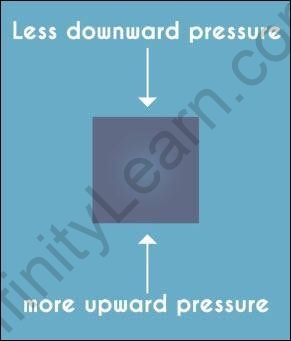Table of Contents
Table of Contents
- Buoyancy Definition
- Summary
- What’s Next?
In the last segment, we learned about pressure in fluids. In this segment, we will learn about buoyancy in detail.
What is Buoyancy?
The net upward force exerted on objects submerged completely or partially in fluids is called buoyancy or buoyant force. It is the force that causes the objects to float. Buoyancy is caused by the differences in pressure acting on opposite sides of an object immersed in a fluid.
When an object is placed inside a fluid, the fluid pressure increases with depth. As the pressure increases with depth, the force exerted on the bottom of the object due to pressure will be more than the force exerted on the top.

Experiment: Buoyancy
Pressure on Object
We can understand buoyancy practically by performing a small activity.
Take a tightly closed, empty plastic bottle and a water container. If you drop the bottle on the surface of the water, it will float because the water is applying an upward force on the bottle. Now, if you try to push the bottle inside the water, the water starts exerting an upward force. If you leave the bottle, it will come up to the surface on its own.
The upward force increases as the bottle is pushed deeper into the fluid because the pressure increases with depth in a fluid. This upward force exerted on the bottle is known as upthrust or the buoyant force.

